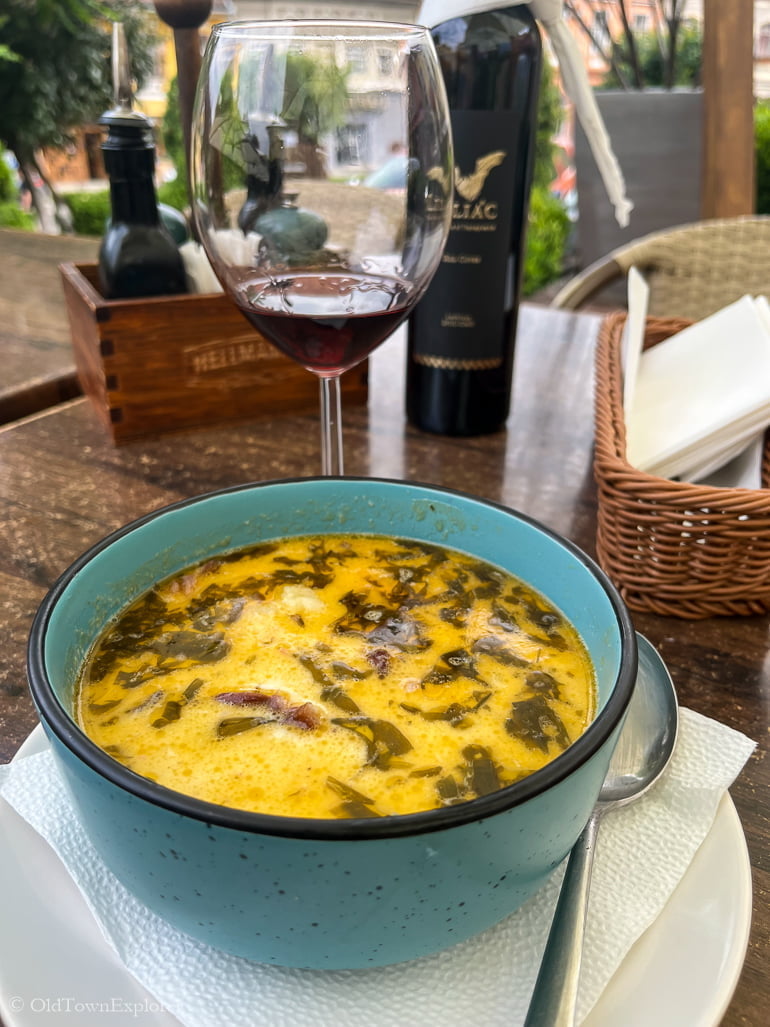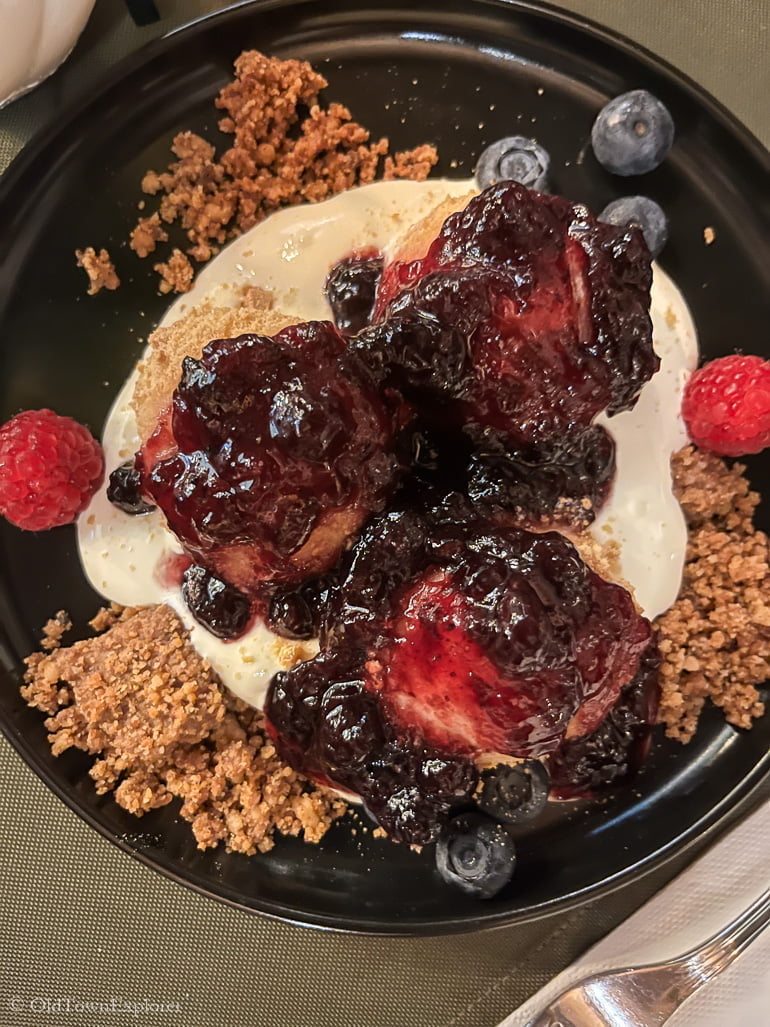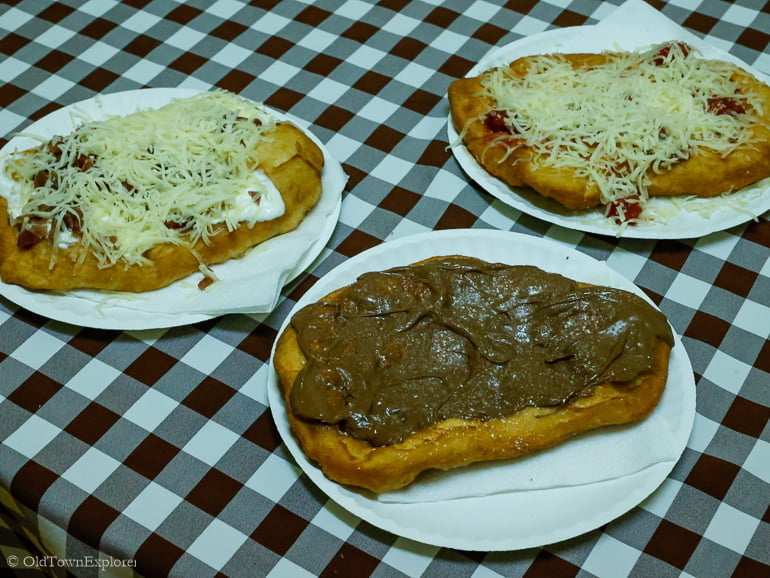Romania Food
Explore Romania Food: Local Food Products & Traditional Dishes
Romanian food is a diverse blend of different dishes from several traditions with which it has come into contact, but it also maintains its own character. It has been mainly influenced by Turkish and a series of European cuisines in particular from the Balkans, or Hungarian cuisine as well as culinary elements stemming from the cuisines of Central Europe.
This website contains affiliate links that may earn us a small commission at no additional cost to you.
Local Food Products in Romania
Approximately 20 products have been identified for a possible European registration, namely Telemea de Vaideeni (Vâlcea county), Bran cheese, Rhubarb jam, Gulianca cheese, Deltaic salad with pike roe, Virşli de Hunedoara, Bread of Pecica, Nădlac salami, Turda brine, Copălău garlic, Pericei onion, Transylvanian ham, Toboliu cabbage, German beer, Cobza with smoked trout from the Putnei Valley, Muscelean pretzel, Sâmbureşti smoked plums, Oltene sausage, Apples from Will you, etc.
Bread
Plăcintă Dobrogeană
Plăcintă dobrogeană is a traditional Romanian pastry that is enjoyed throughout the country. Originating from the Dobrogea region, this delicious bread is made by filling a flaky dough with various ingredients such as cheese, spinach, or meat and then baking it to perfection. The result is a mouthwatering treat that combines savory flavors and a satisfying crunch.
Plăcintă dobrogeană is registered as a Romanian protected geographical indication (PGI) product in the European Union.
Pită de Pecica
Pită de Pecica is a popular bread in Romania that holds a special place in the hearts of locals. This traditional bread, originating from the Pecica region, is known for its rustic flavor and soft texture. It is often enjoyed as a staple food and pairs perfectly with various dishes.
The crust of Pită de Pecica has a delightful golden color and a slight crunch, while the inside remains fluffy and airy. Whether used for sandwiches, as a side dish, or simply enjoyed on its own, this bread adds a comforting touch to any meal.
Meat
Salinate de Turda
Salinate de Turda is a must-try delicacy for meat lovers visiting Romania. This traditional meat product, originating from the town of Turda, is prepared by smoking and salting various cuts of meat. The result is a rich and savory flavor that pairs well with bread, cheese, or as a topping for traditional Romanian dishes.

Cârnaţi de Pleşcoi
Cârnaţi de Pleşcoi is a beloved Romanian sausage that has gained recognition for its unique taste and traditional preparation. Originating from the Pleşcoi region, this sausage is made using high-quality minced meat, typically from sheep or lamb, mixed with a special blend of spices and garlic.
What sets Cârnaţi de Pleşcoi apart is its distinct shape and texture. The sausage is long and thin, with a twisted appearance, giving it an appealing visual appeal. When cooked, it retains its juiciness and tenderness, offering a burst of flavor with every bite. Whether grilled, pan-fried, or cooked in stews and soups, Cârnaţi de Pleşcoi adds a unique and delicious twist to any dish.
Pleșcoi sausages are registered as a Romanian protected geographical indication (PGI) product in the European Union.
Salam de Sibiu
Salam de Sibiu is a well-known Romanian cured meat that has been enjoyed for centuries. Originating from the city of Sibiu, this delicacy is made from finely ground pork blended with a combination of spices and herbs. The mixture is then stuffed into natural casings and aged to perfection.
What sets Salam de Sibiu apart is its rich and robust flavor profile. With hints of garlic, pepper, and other traditional Romanian spices, every bite is a savory delight. The curing process gives the meat a firm texture that melts in your mouth, making it an ideal accompaniment to bread, cheese, or as a topping for traditional Romanian dishes.
Whether enjoyed as a snack or incorporated into various recipes, Salam de Sibiu adds a burst of flavor and depth to any dish it graces. From sandwiches to charcuterie boards, this cured meat is a versatile ingredient that never fails to impress with its distinctive taste.
Salam de Sibiu is a variety of salami registered as a Romanian protected geographical indication (PGI) product in the European Union.
Fish
Salată cu Icre de Stiucă de Tulcea
Salată cu icre de știucă de Tulcea is a traditional Romanian dish that celebrates the rich flavors of the Danube Delta. Made with prized pike roe from the city of Tulcea, this salad showcases the bounty of the river in a delightful and refreshing way.
The star ingredient, pike roe, is carefully prepared to create a creamy and indulgent texture. Mixed with fresh herbs, onions, and a touch of lemon juice, Salată cu icre de știucă de Tulcea offers a burst of tangy and zesty flavors. The combination of creamy roe and vibrant herbs creates a harmonious balance that dances on the palate.
This salad is traditionally served as a topping for crusty bread or as a side dish to accompany seafood or grilled meats. The luxurious texture and bright flavors make it a perfect addition to any festive table or gathering.
Salată cu icre de știucă de Tulcea is a variety of Salată de icre registered as a Romanian protected geographical indication (PGI) product in the European Union.
Salata Tradițională cu Icre de Crap
Salata tradițională cu icre de crap is another classic Romanian dish that showcases the country’s love for fresh fish. Made with carp roe, this salad is a true delicacy that embodies the flavors of Romania’s rivers and lakes.
The carp roe is carefully prepared to achieve a smooth and creamy consistency. Combined with finely chopped onions, freshly squeezed lemon juice, and a sprinkle of salt, Salata tradițională cu icre de crap offers a burst of briny goodness with every bite. The rich umami flavors of the roe are beautifully complemented by the refreshing acidity of the lemon juice, creating a perfect harmony of taste.
This traditional Romanian salad is typically served as a spread on toasted bread or as a filling for savory pastries. It’s a popular choice for picnics and gatherings, adding a touch of elegance and sophistication to any meal.
Salata tradițională cu icre de crap is another variety of Salată de icre registered as a Romanian protected geographical indication (PGI) product in the European Union.
Novac Afumat din Ţara Bârsei
Novac afumat din Ţara Bârsei is a renowned delicacy in Romania, hailing from the picturesque region of Ţara Bârsei. This smoked trout is revered for its distinct flavor and texture, making it a beloved choice among seafood enthusiasts.
The preparation of Novac afumat din Ţara Bârsei involves a meticulous smoking process that enhances the natural characteristics of the trout. The fish is carefully salted and then slowly smoked over beech wood, infusing it with a delightful smokiness that lingers on the palate.
Novac afumat din Țara Bârsei is smoked carp fillet, registered as a Romanian protected geographical indication (PGI) product in the European Union
Scrumbie de Dunăre Afumată
Scrumbie de Dunăre afumată, or smoked Danube herring, is an exquisite delicacy showcasing Romania’s culinary excellence. The herring used in this traditional dish is sourced from the mighty Danube River, known for its pristine waters and abundance of fish.
To create Scrumbie de Dunăre afumată, the herring is carefully cleaned and expertly smoked using a special blend of aromatic wood chips. The result is a tender and succulent fish with a distinct smoky flavor that delights the senses.
This smoked herring is often enjoyed as a delectable appetizer or served alongside traditional Romanian dishes such as sarmale (cabbage rolls) or mămăligă (polenta). Its rich, smoky taste adds depth to the overall flavor profile of the meal, making it a sought-after choice for seafood lovers.
Scrumbie de Dunăre afumată is smoked pontic shad, registered as a Romanian protected geographical indication (PGI) product in the European Union.
Cheese
Caşcaval de Săveni
Caşcaval de Săveni is a tantalizing cheese that is known for its creamy texture and bold flavor. Crafted with passion and expertise, Caşcaval de Săveni undergoes a meticulous aging process to develop its distinctive taste. Made from cow’s milk, it is carefully curdled and then pressed to remove excess moisture. The result is a firm yet smooth cheese with a slightly nutty undertone.
The Cașcaval de Săveni is as a Romanian protected geographical indication (PGI) product in the European Union.
Telemea de Sibiu
Telemea de Sibiu is a beloved cheese that originates from the enchanting city of Sibiu in Romania. This cheese is a true testament to the craftsmanship and dedication of local cheesemakers.
Made from sheep’s milk, Telemea de Sibiu is known for its heavenly creamy texture and delicate flavor. The cheesemakers carefully curdle the milk using traditional methods, allowing the cheese to develop its unique characteristics over time.
Telemea de Sibiu can be enjoyed on its own, crumbled over salads, or melted into dishes for an added touch of richness.
Telemea de Ibăneşti
Telemea de Ibănești is a delightful Romanian cheese that hails from the picturesque town of Ibănești. This cheese is a true symbol of the rich culinary heritage of Romania and showcases the artistry of local cheesemakers.
Made from sheep’s milk, Telemea de Ibănești boasts a smooth and creamy texture that melts in your mouth. The cheese undergoes a traditional curdling process, which gives it a distinctive tangy flavor that lingers on your taste buds.
Fruit
Magiun de prune Topoloveni
Magiun de prune Topoloveni is a delectable Romanian fruit spread that has been cherished for generations. This exquisite spread is made from the finest plums harvested in the scenic region of Topoloveni, known for its bountiful orchards.
The plums used to create Magiun de prune Topoloveni are carefully selected and cooked down to a thick, velvety consistency. No artificial preservatives or additives are added, allowing the natural sweetness of the plums to shine through.
Traditional Dishes in Romania
Traditional dishes are divided into three regional styles: the mountains, the coast, and the central area.
Appetizer

Ciorba
Ciorbă includes a wide range of soups with a characteristic sour taste. Variations include meat and vegetable soup, tripe (ciorbă de burtă) and calf foot soup, or fish soup, all of which are soured by lemon juice, sauerkraut juice (zeamă de varză), vinegar, or borș (traditionally made from bran).
Zacuscă
Zacuscă is a Romanian vegetable spread usually consisting of roasted eggplants, red peppers, tomato paste, and onions, seasoned with salt, pepper, and bay leaves. In some cases, beans, mushrooms, or even fish will be used instead of eggplants. It is similar to other eggplant-based relishes in the Balkan area, such as ljutenica, ajvar, pinđur, or kyopolou.
A well-liked home-cooked dish, it is traditionally made in large batches after the autumn harvest and kept in tightly sealed mason jars in order to be preserved for longer periods of time. However, after being opened, it should be eaten in a few days. Zacuscă is most commonly served on bread as an appetizer.
Side Dish

Mămăligă
Mămăligă is a traditional Romanian side dish that has been enjoyed for centuries. Made from coarse cornmeal, water, and salt, it is cooked slowly over low heat until it reaches a thick and creamy consistency. The result is a comforting and versatile dish that can be served alongside various main courses.
In the mountains of Romania, mămăligă often accompanies hearty meat dishes such as tocăniță (stewed meat). The creamy texture of the mămăligă pairs perfectly with the rich flavors of these dishes, creating a satisfying and balanced meal. In rural areas, mămăligă is often enjoyed simply with a dollop of butter or cheese, providing a nourishing and filling option for those living off the land.
Main Course
Sarmale
Sarmale is a beloved traditional dish in Romania. These delicious cabbage rolls are made with a filling of ground meat, rice, and spices, wrapped in pickled cabbage leaves, and then simmered in a flavorful tomato sauce. The combination of tender cabbage and savory filling creates a mouthwatering taste that will satisfy any appetite.
Veal Stew with Polenta
Veal stew with polenta (tocana de vitel cu mamaliga)
Dessert

Pananasi
Be sure to leave room for dessert as no dining experience in Sighisoara is complete without pananasi. This is a classic local dessert that is a scrumptious donut lathered with sour cream and jam. It’s simple and will send your taste buds straight to heaven.
Cozonac
A sweet bread similar to a brioche, filled with nuts, raisins, or chocolate. It is often enjoyed during holidays such as Christmas and Easter.
Street Food

Mici
One cannot talk about Romanian food without mentioning mici. These delicious little sausages are a staple of street food in Romania. Made from a mixture of ground pork, beef, and spices, they are grilled until juicy and flavorful. Served on a piece of bread with mustard or ketchup, mici make for the perfect on-the-go snack or a satisfying meal.

Langos
Although technically Hungarian, langos is another treat locals love and one you should try, especially if Budapest isn’t on the itinerary. Small hole-in-the-wall shops are where you often find this delicacy, which is fried bread smothered with onion sauce, sour cream, and cheese. It’s a mix of pizza and flatbread and is utterly delicious.
Covrigi
Similar to pretzels, covrigi are soft, doughy bread rings that are often sprinkled with salt or sesame seeds.
Kurtos Kalacs
Also known as chimney cake, kurtos kalacs is a sweet pastry made from yeast dough that is wrapped around a cylindrical spit, baked over an open fire, and coated in sugar or other toppings.
FAQs About Romania Food
What is the national dish of Romania?
The national dish of Romania is called “sarmale.” It is a traditional dish made of cabbage leaves stuffed with a mixture of ground meat, rice, and spices. Sarmale is often served with sour cream and polenta. It is a popular dish during holidays and special occasions in Romania.
What are traditional food of Transylvania?
Transylvania, a historical region in Romania, has a rich culinary heritage with traditional dishes that reflect its cultural diversity. Some popular traditional foods of Transylvania include:
1. Sarmale: Cabbage rolls stuffed with a mixture of ground pork, rice, and spices. They are typically cooked in a tomato-based sauce and served with sour cream.
2. Mămăligă: A traditional Romanian polenta made from cornmeal. It is often served as a side dish with various stews or meat dishes.
3. Papanași: A type of Romanian doughnut made from cottage cheese, flour, and eggs. They are usually fried until golden brown and served with sour cream and jam.
4. Ciorbă de burtă: Tripe soup, made from beef tripe cooked with vegetables and flavored with garlic, vinegar, and sour cream.
5. Cozonac: A sweet bread similar to a brioche, filled with nuts, raisins, or chocolate. It is often enjoyed during holidays such as Christmas and Easter.
These are just a few examples of the traditional foods you can find in Transylvania. The region’s cuisine is influenced by its history and the various ethnic groups that have lived there over the centuries.
What is typical Romanian street food?
Typical Romanian street food includes a variety of delicious and satisfying dishes. Some popular options include:
1. Mici: These are small grilled sausages made from a mixture of beef, lamb, and pork, seasoned with spices like garlic and paprika.
2. Covrigi: Similar to pretzels, covrigi are soft, doughy bread rings that are often sprinkled with salt or sesame seeds.
3. Langos: A Hungarian dish that is also popular in Romania, langos is a deep-fried bread topped with sour cream, cheese, and garlic sauce.
4. Sarmale: These are cabbage rolls filled with a mixture of ground meat (usually pork) and rice, cooked in a flavorful tomato sauce.
5. Kurtos kalacs: Also known as chimney cake, kurtos kalacs is a sweet pastry made from yeast dough that is wrapped around a cylindrical spit, baked over an open fire, and coated in sugar or other toppings.
These are just a few examples of the tasty street food you can find in Romania. It’s definitely worth exploring the local markets and food stalls to discover more delicious treats!
What are traditional Romanian spices?
Traditional Romanian cuisine includes a variety of spices that add flavor and depth to dishes. Some common traditional Romanian spices include:
1. Paprika: Paprika is a key ingredient in many Romanian dishes, adding a rich, smoky flavor and vibrant red color.
2. Dill: Dill is widely used in Romanian cooking, particularly in soups, stews, and pickled vegetables. It has a fresh, slightly sweet taste that complements many dishes.
3. Bay leaves: Bay leaves are often added to soups, stews, and braised dishes to impart a subtle earthy flavor.
4. Thyme: Thyme is frequently used in Romanian cuisine for its aromatic and slightly minty flavor. It pairs well with meats, vegetables, and sauces.
5. Caraway seeds: Caraway seeds have a distinct nutty flavor and are commonly used in breads, sausages, and cheeses in Romanian cuisine.
6. Juniper berries: Juniper berries are used to add a unique herbal and slightly citrusy flavor to certain meat dishes and pickled vegetables.
These are just a few examples of the traditional spices used in Romanian cuisine. The specific combination of spices may vary depending on the region or the dish being prepared.
